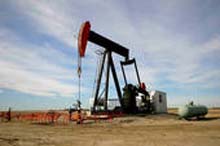About Oklahoma
Oklahoma is a state located in the southern Great Plains and Eastern Woodlands regions of the United States, and is part of a region commonly known as the American “Heartland.” The Congressional Quarterly and Census report place Oklahoma in the Southern United States. However, since Oklahoma is near the geographic center of the U.S., the regional influences add to Oklahoma’s unique character. Oklahoma is one of the six states on the Frontier Strip. It is bounded on the east by Arkansas and Missouri, on the north by Kansas and northwest by Colorado , on the far west by New Mexico , and on the south and near-west by Texas.
The state’s name comes from the Choctaw words okla meaning people and homma meaning red, literally meaning “red people” and was chosen by Allen Wright, Principal Chief of the Choctaw Nation between 1866 and 1870. It is a state with a colorful history, including its days as a frontier state, it being a destination of recently freed slaves looking for opportunity and equality, and being at the heart of the oil boom in the early 20th century.
Most notably, Oklahoma has the nation’s second largest American Indian population. In honor of its large American Indian population, and for tourism purposes, Oklahoma is called “Native America.” Oklahoma’s early history is forever tied to the Trail of Tears, which was the forced removal of the Five Civilized Tribes from the southeastern United States to present-day Oklahoma. As a testament to the state’s western and American Indian heritage, Oklahoma (Tulsa) is the home of the world-renowned Gilcrease Museum, which houses the world’s largest, most comprehensive collection of American Western and American Indian art, artifacts, manuscripts, documents, and maps.
Oklahoma is a state dominated by contrasting cold and warm air masses which collide east of the Rocky Mountains. As can be expected, this results in a wide range of weather throughout the state, ranging from a borderline humid subtropical climate zone near the southeast part of the state to a semi-arid climate in the High Plains of the panhandle. While there is some variation in temperature in the state, with the south portion on the Texas border averaging an annual mean temperature of 62 °F, and the panhandle averaging under 54 °F, the main climatic difference in Oklahoma is precipitation. The southeast corner of the state near the Ouachita Mountains averages over 52 inches of precipitation a year. Moving west from that point, the precipitation decreases rapidly- for each 10 miles traveled west, the precipitation isapproximately 1 inch less. The driest part of the state is the extreme western panhandle with less than 16 inch annually.
Oklahoma is a major fuel and food-producing state; thousands of oil and natural gas wells dot the Oklahoma landscape, and the state is among the highest food producing states in the nation. Its main agricultural outputs are soy, wheat, cattle, dairy, poultry, and cotton. Oklahoma ranks fourth in the nation in the production of all wheat, fourth in cattle and calf production; fifth in the production of pecans; sixth in peanuts and eight in peaches. Its industrial outputs are transportation equipment, machinery, electric products, rubber and plastic products, and food processing.
$state_id = ‘OK’ ;
global $state_id ;
[/insert_php]
[insert_php]
$state_id = ‘OK’ ;
[/insert_php]








